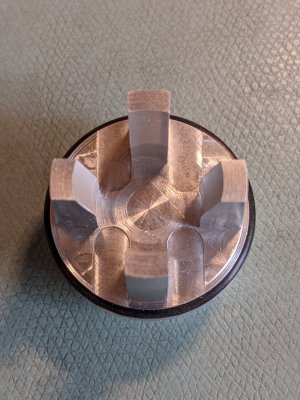- Joined
- Dec 18, 2019
- Messages
- 6,464
I've noticed that even locking the z-axis gibs on my PM25MV, the head drops a tad after use. By a tad, I mean 0.01 mm. This is after 5-10 minutes. For what I do, most of the time it doesn't matter, but sometimes it does. Here is an example of what happened.

You can see slots in the surface. I didn't change the z axis, it was locked. The R8 collet was tight. The quill was locked. What can cause this? What is the technical term for this effect? Is there a fix for it? For what it is worth, it doesn't always happen, but it happens frequently enough that it's annoying, and can spoil the appearance of a piece.

You can see slots in the surface. I didn't change the z axis, it was locked. The R8 collet was tight. The quill was locked. What can cause this? What is the technical term for this effect? Is there a fix for it? For what it is worth, it doesn't always happen, but it happens frequently enough that it's annoying, and can spoil the appearance of a piece.

